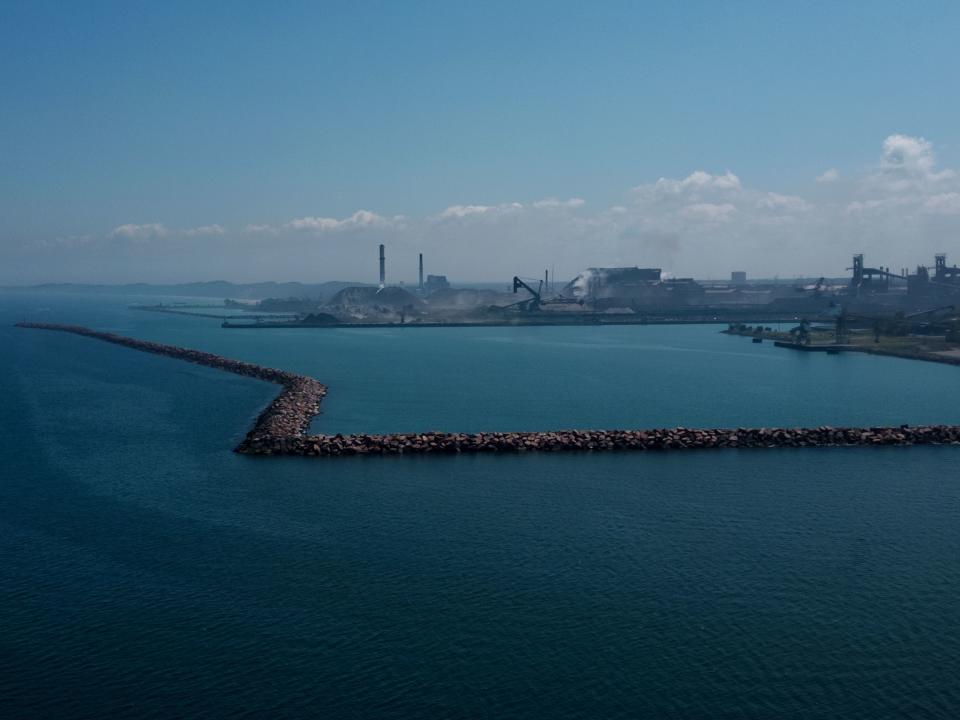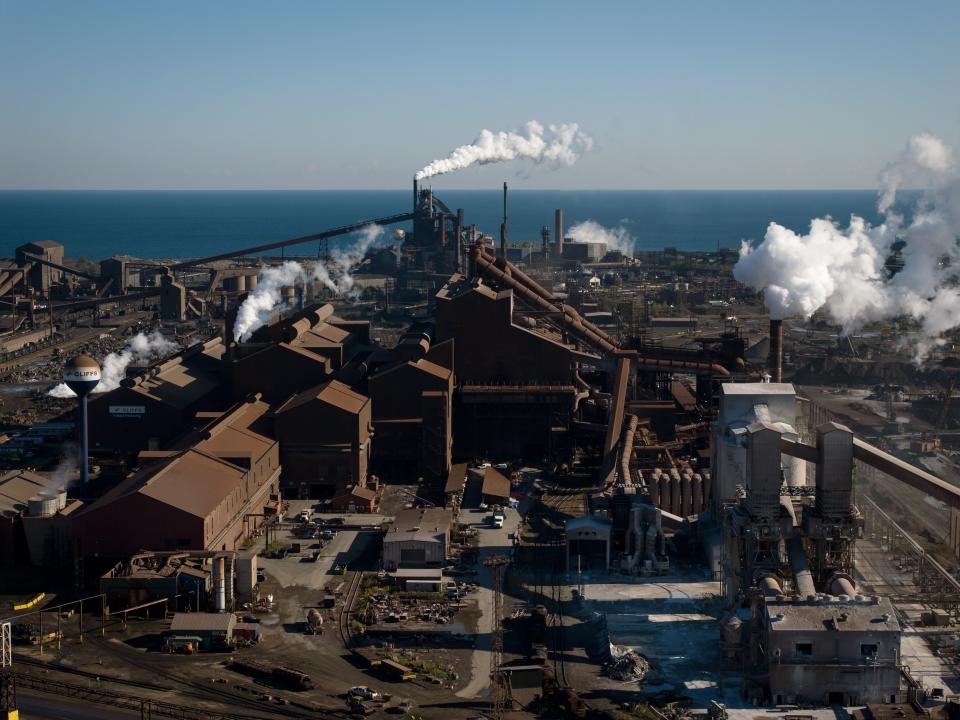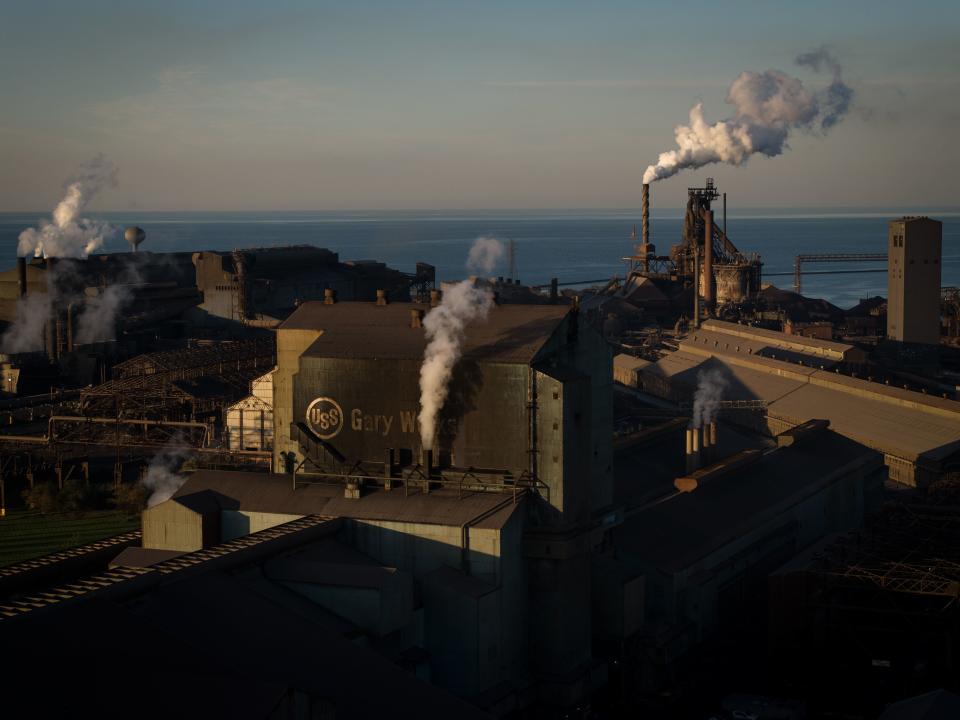New regulations would barely dent the massive amounts of toxic pollution NW Indiana steel mills have been spewing for years
Kimmie Gordon grew up in a Gary neighborhood sandwiched between two of the biggest steel mills in the world. Her stepfather worked at another northwest Indiana mill along the southern tip of Lake Michigan, and she remembers how he would return home during the 1980s with his clothes and car covered in soot.
Gordon didn’t think much about it until she was older and learned about toxic substances in the gunk, including heavy metals such as brain-damaging lead and cancer-causing chromium. Thick black smoke and bright orange flares from the steel mills seemed a part of everyday life. Then she found out the eruptions exposed her community to benzene, hydrogen cyanide and other hazardous chemicals.
More than a decade ago, testing required by the U.S. Environmental Protection Agency documented staggering amounts of previously unaccounted for pollution released into the air by steel mills in Burns Harbor, Indiana Harbor, Gary and five other locations in Illinois, Michigan, Ohio and Pennsylvania. Yet the EPA has repeatedly failed to crack down on corporate owners of the mills, which combined reported more than $40 billion in revenues last year.
New regulations proposed by President Joe Biden’s administration — required by a federal court order — would barely make a dent in reducing as much as 600 tons of metals and chemicals the EPA says has been emitted annually by the eight mills.
As a result, predominantly Black, low-income neighbors of the northwest Indiana mills would continue to be disproportionately at risk from pollution that can irreparably damage the brains of young children, cause cancer and trigger other diseases — a departure from Biden’s pledge to make environmental justice a cornerstone of his administration.
“They aren’t doing anything close to what they should be doing to protect our communities,” said Gordon, who leads Brown Faces Green Spaces, a Gary-based group that promotes outdoor recreation. “It’s as if they are putting a Band-Aid on a gunshot wound.”
The eight steel mills at issue are the last in the United States that make steel from scratch in a blast furnace. They are owned by just two companies: Cleveland Cliffs and U.S. Steel.
Executives from both companies told White House staff in May that more stringent regulations would burden them with “exorbitant costs” but provide few benefits, meeting records show.
A U.S. Steel slide presentation claimed the cost of new and allegedly unproven pollution controls would make the industry less competitive, “potentially jeopardizing national security and critical infrastructure.” Slides from the American Iron and Steel Institute repeatedly cited documents filed by the EPA during the administration of former President Donald Trump to justify its version of the regulations, which later were thrown out by a federal court.
One of the documents Biden administration officials filed in the federal rule-making docket states “we expect no control costs or emissions reductions” if proposed limits on pollution from several areas within the steel mills are adopted. The EPA reached that conclusion after the White House weakened a draft sent by the agency for review, federal records show.
At most the Biden EPA’s regulations would prevent 80 tons of metals from spewing out of the steel mills each year — significantly less than what the agency’s career staff determined would be feasible and cost-effective with available technology.
In response to questions from the Chicago Tribune, spokespeople for Cliffs and U.S. Steel directed a reporter to industry documents shared with the White House and EPA.
In 2011, Burns Harbor and Indiana Harbor, the two northwest Indiana mills now owned by Cliffs, and U.S. Steel’s Gary Works were responsible for more than 95% of the 224 tons of unregulated toxic metals and chemicals emitted annually through the industry’s smokestacks, according to the EPA.
Another 351 tons of lead and other metals escaped into the air every year through open doors and vents at the eight steel mills.
The pollution data, based on testing required by the EPA, show Cliffs and U.S. Steel emitted dramatically higher levels of toxic metals than what the companies report to the publicly available Toxics Release Inventory. Burns Harbor, for instance, reported releasing less than 3 tons of lead to the TRI in 2011 and just 1.5 tons last year.
Nearly all of the pollution from the northwest Indiana mills came from equipment initially built to convert iron ore into a material called sinter used in blast furnaces, EPA records show. The three mills are the only ones left in the United States permitted to operate sinter plants, which the companies said they now use solely to recycle iron and steel waste.
Cliffs idled its Indiana Harbor sinter plant in 2020. The others at Burns Harbor and Gary are still operating.
“All of that lead and arsenic and other metal they emitted for decades doesn’t just go away,” said Elizabeth Palacio, a retired steelworker who lives in East Chicago within a mile of the Indiana Harbor mill. “It’s in the soil and dust that gets kicked up where kids play.”
Palacio said she wipes soot off her windows every day and described seeing occasional bursts of pollution from the northwest Indiana mills that turn the sky shades of orange and red.
The EPA still relies on the 2011 testing in its regulatory documents. An agency spokesperson declined to answer specific questions from the Tribune but sent a statement saying the “Biden Administration is deeply committed to protecting air quality, and the health of communities — particularly those who have been historically burdened by steel plant emissions.”
East Chicago and Gary are cities built around steel mills during the early part of the last century. Pollution from the massive industrial plants remained largely unchecked until Congress approved the federal Clean Air Act in 1970 and Clean Water Act in 1972.
EPA officials didn’t propose regulation of toxic air pollution from steel mills until 2003. A group of environmental attorneys including Jim Pew, a lawyer for the nonprofit group Earthjustice, sued for more stringent standards that year, then sued again in 2015 after more than a decade had passed without a review required under the Clean Air Act.
Pew and his colleagues successfully sued the agency again in 2020, when a federal court determined the Trump administration’s revisions violated the law. The court later ordered the Biden administration to try again.
“The amount of lead alone coming out of these steel mills is off the charts,” said Pew, who noted the EPA is moving to require a related industry, copper smelting, to install ducts on vents and other openings that direct pollution into equipment capable of filtering more than 90% of the metals.
“It doesn’t have to be this way,” Pew said. “If reducing this pollution costs the industry a few million dollars a year, that’s a rounding error for these companies. But it would go a long way toward protecting neighboring communities and workers inside the mills.”




